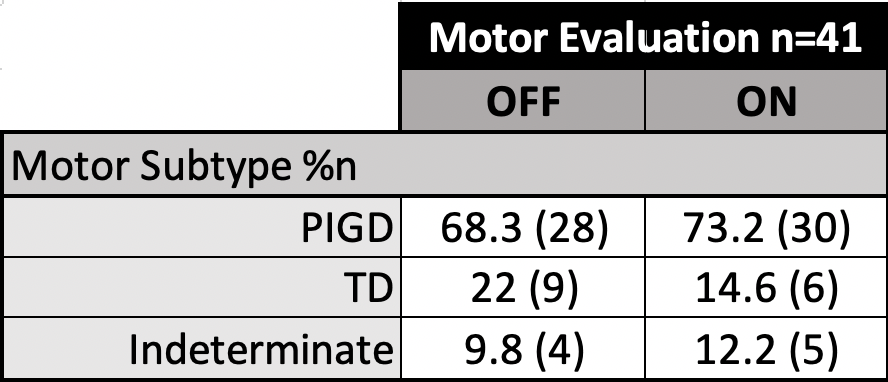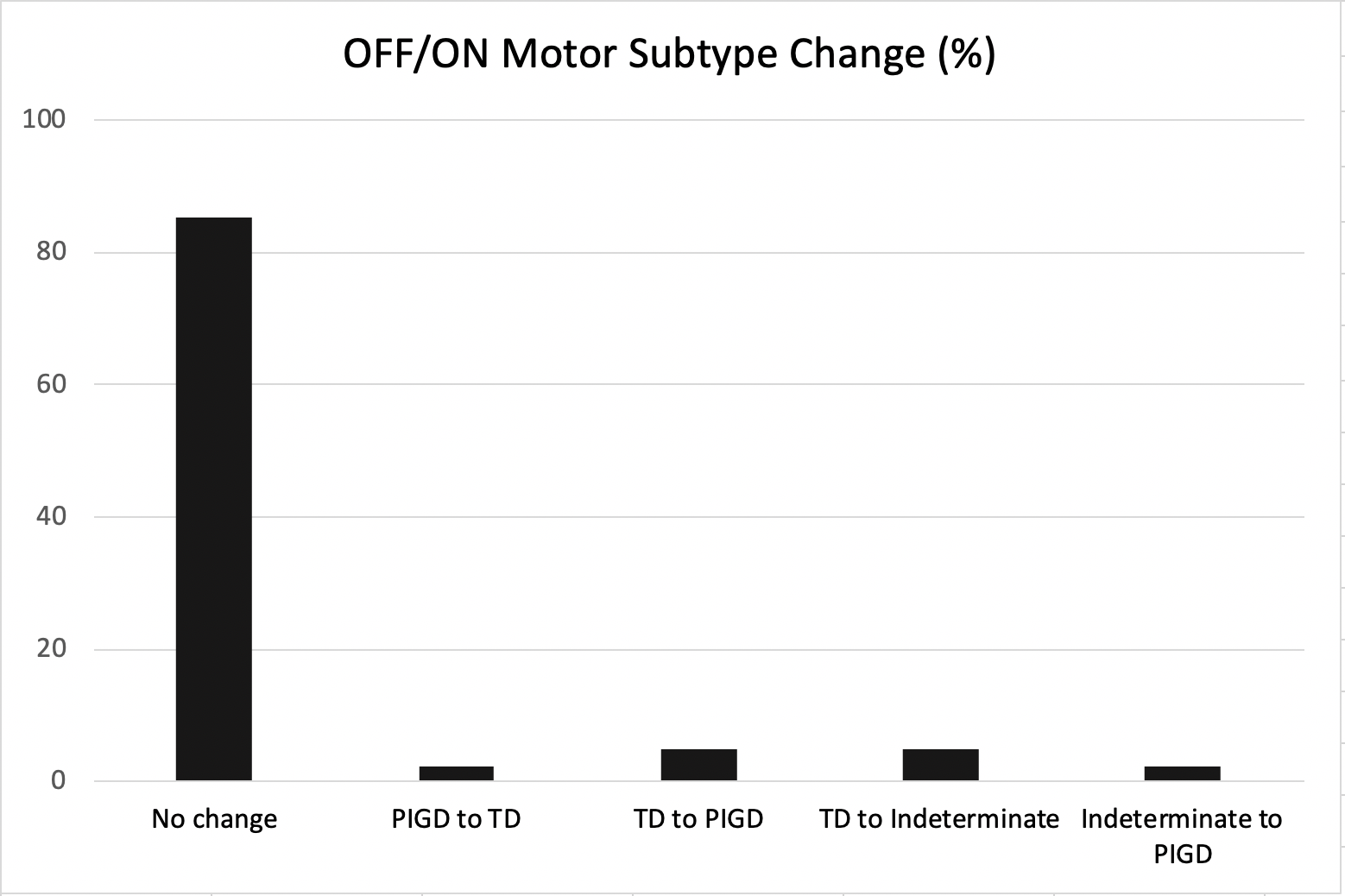Objective: To identify if there is any difference in the motor subtype of PwPD between “off” stage and “on” stage.
Background: Patients with Parkinson’s disease (PwPD) can be classified as tremor dominant (TD), as postural instability and gait disorders (PIGD) or indeterminate.[1,2] After several years of levodopa (LD) treatment, patients can experience “off” and “on” periods. [3,4] The motor evaluation by the MDS-UPDRS III can change between these off-on periods, resulting in different motor subtype depending on the moment of evaluation.
Method: We included consecutive patients that were elected to go under a Levodopa Test. MDS-UPDRS was collected at “off” stage (at least 8 hours after their last LD dose), then a LD dose was given (50% more than their usual dose), and at “on” stage (referred by the patient) the MDS-UPDRS was collected. Motor Subtype was calculated according to Stebbins et al [1].
Results: 41 patients (63.4% male) were evaluated. With a mean age of 58.3±10.7, and a mean duration of the disease of 9.5±4.2 years. The mean MDS-UPDRSIII at “off” was of 47.5±16.1, and 26.6±14.2 at “on”. The most prevalent motor subtype was PIGD, at “off” and at ON (68.3% and 73.2%). Followed by TD (22% and 14.6%) [table 1]. 85.4% of PwP maintained the same motor subtype, 2.4% changed from PIGD to TD and from Indeterminate to PIGD. 4.9% PwP changed from TD to PIGD and from TD to Indeterminate. [figure 1]
Conclusion: We found that most of the PwPD maintained their motor subtype (85.4%). The motor subtype did not vary heavily between “off-on” periods, suggesting that the motor subtype categorization can be performed regardless of being at “off” or at “on” period.
References: 1.- Stebbins GT, Goetz CG, Burn DJ, Jankovic J, Khoo TK, Tilley BC. How to identify tremor dominant and postural instability/gait difficulty groups with the movement disorder society unified Parkinsons disease rating scale: Comparison with the unified Parkinsons disease rating scale. Movement Disorders. 2013;28(5):668–70. 2.- Nutt JG. Motor subtype in Parkinson’s disease: Different disorders or different stages of disease? Movement Disorders. 2016;31(7):957–61. 3.- Chou, K. L., Stacy, M., Simuni, T., Miyasaki, J., Oertel, W. H., Sethi, K., … Stocchi, F.. The spectrum of “off” in Parkinson’s disease: What have we learned over 40 years? Parkinsonism & Related Disorders. 2018;51. 9–16. 4.- Marsden, C. D., & Parkes, J. D. “ON-OFF” EFFECTS IN PATIENTS WITH PARKINSON’S DISEASE ON CHRONIC LEVODOPA THERAPY. The Lancet. 1976;307(7954), 292–296.
To cite this abstract in AMA style:
O. Esquivel-Zapata, A. Abundes-Corona, F. Herrera-Rodriguez, O. Cardenas-Saenz, E. Escobar-Valdivia, Y. Ríos-Solís, H. Tellez-Lucero, A. Cervantes-Arriaga, M. Rodriguez-Violante. Motor subtype change between OFF and ON periods in patients with Parkinson’s disease [abstract]. Mov Disord. 2020; 35 (suppl 1). https://www.mdsabstracts.org/abstract/motor-subtype-change-between-off-and-on-periods-in-patients-with-parkinsons-disease/. Accessed December 9, 2025.« Back to MDS Virtual Congress 2020
MDS Abstracts - https://www.mdsabstracts.org/abstract/motor-subtype-change-between-off-and-on-periods-in-patients-with-parkinsons-disease/


